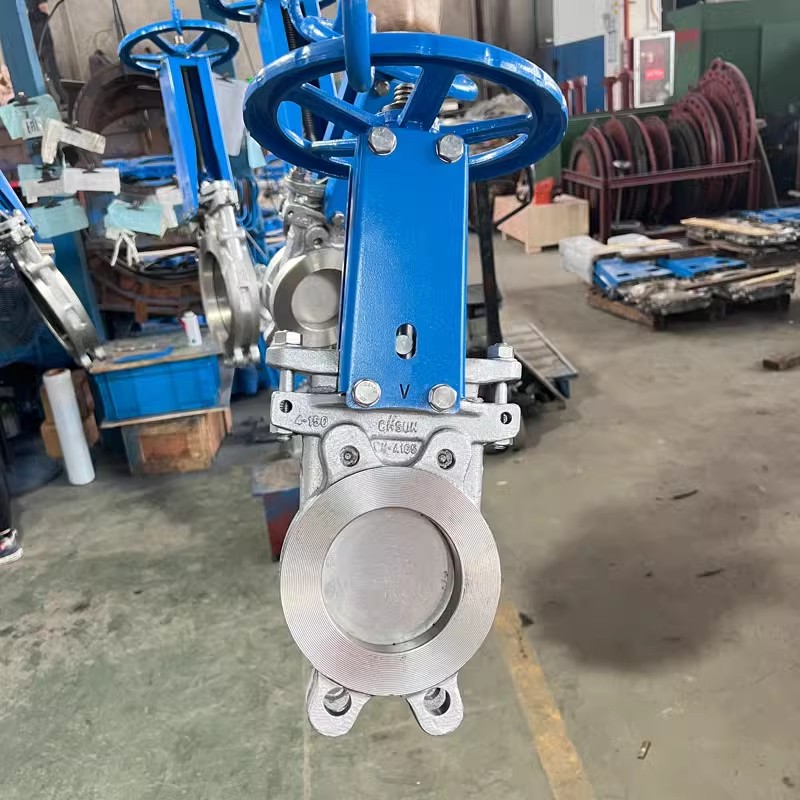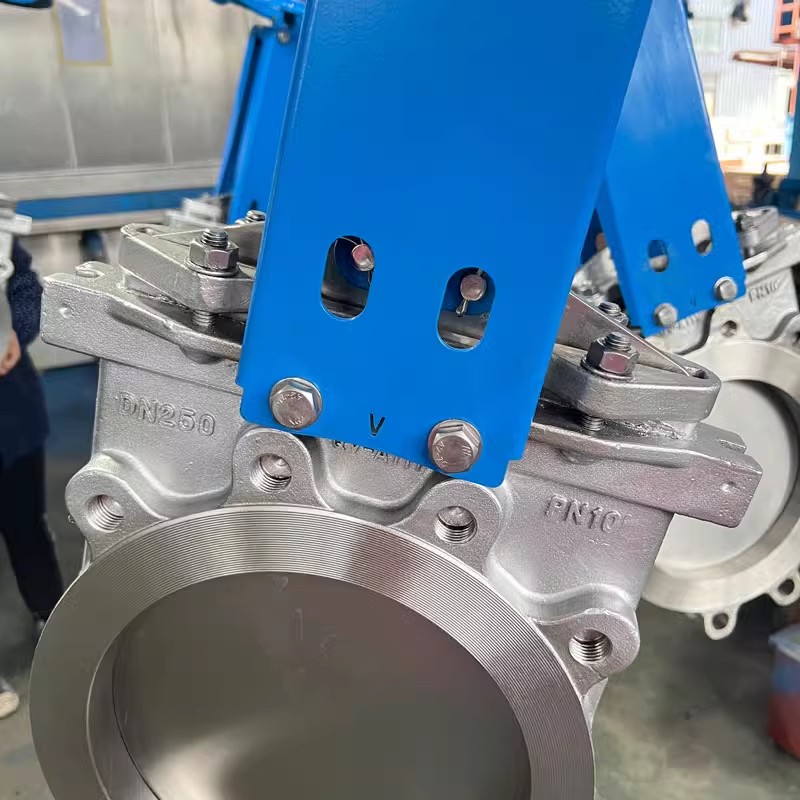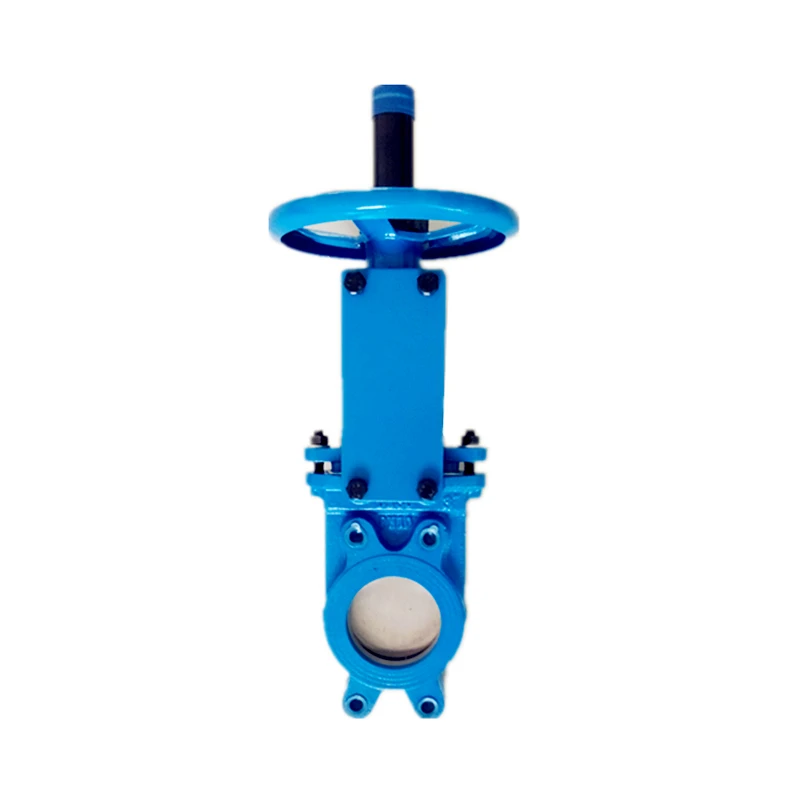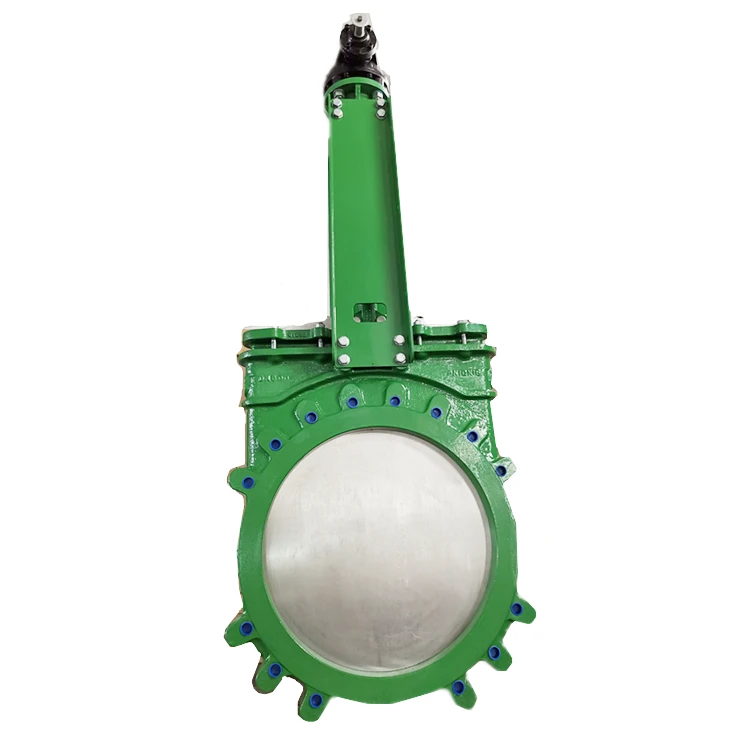Exploring Types of Knife Gate Valves: Wafer and Weir Styles
Key Takeaways
Knife gate valves represent a critical component in various industrial applications, particularly in managing the flow of liquids and slurries. The wafer knife gate valve is designed with a compact structure that fits between flanges, allowing for easy installation and alignment within pipelines. Its sleek profile minimizes the overall footprint while maintaining critical functionality. The wafer style knife gate valve typically features a full port design, ensuring unobstructed flow. This design is particularly advantageous in scenarios where fluid dynamics require minimized resistance, such as in wastewater treatment plants and pulp and paper industries.
In contrast, weir knife gate valves employ a distinct design that includes an elevated seat. This elevation allows for enhanced sealing capabilities against non-pressurized services and is especially effective for handling slurry or wastewater applications where sediment can create challenges. Understanding the distinctions between these valve types informs the selection process based on specific operational needs.
When considering the wafer type knife gate valve, compatibility with existing piping systems emerges as a vital factor. Their ease of maintenance and efficient service life further solidify their position as preferred choices in many engineering contexts. Choosing between different types necessitates careful consideration of operational parameters, such as pressure limits and flow requirements, tailored to each unique industrial application.
The analysis of these designs underscores the importance of selecting the appropriate type of knife gate valve, ensuring optimized performance and reliability across various processes within industrial systems.
Exploring the Design Features of Wafer Knife Gate Valves
Wafer knife gate valves are engineered with a unique design that emphasizes both efficiency and functionality in handling flow control in various systems. The wafer style design allows these valves to fit snugly between flanges, providing a compact solution for space-constrained applications. Their flat body integrates seamlessly into piping systems, promoting ease of installation and maintenance.
The blade itself features a sharp edge that slices through the material flow when opened, ensuring minimal turbulence, which is crucial for maintaining flow consistency. This design is particularly beneficial in industries such as wastewater treatment and pulp and paper manufacturing, where the ability to handle slurries or particulates is essential.
Materials used in the construction of wafer type knife gate valves often include stainless steel or ductile iron, chosen for their durability and resistance to corrosion. The seal arrangement utilizes elastomeric materials to effectively prevent leakage when the valve is closed. Operators appreciate how the straightforward manual or automated actuation mechanisms offer precise control over flow regulation.
"The thoughtful engineering behind wafer knife gate valves enhances both efficiency and reliability, making them a preferred choice in challenging industrial environments."
In conclusion, understanding these design features highlights why wafer knife gate valves are critical components across numerous industrial applications, promoting effective and reliable operation in diverse environments.
Applications of Wafer Style Knife Gate Valves in Industry
Wafer style knife gate valves play a crucial role across various industrial applications, particularly in sectors that handle liquids, slurries, and solids. Their design features facilitate seamless integration between piping systems due to the wafer-style construction that allows them to fit between flanged connections without external support. These valves are predominantly utilized in wastewater treatment plants, where effective fluid control is essential for managing both inflow and outflow processes. The low-pressure drop across the valve contributes to energy efficiency, which is vital in systems where operational costs are closely monitored.
In the pulp and paper industry, wafer type knife gate valves ensure efficient flow management when processing fibrous materials. Their ability to achieve a tight seal prevents leaks and minimizes the risk of contamination, maintaining the quality of the final product. Similarly, in mining operations, these valves are instrumental in handling abrasive slurries that could wear down traditional valve types. By providing reliable shut-off capability while mitigating wear and tear, wafer knife gate valves contribute significantly to operational longevity and cost-effectiveness.
Chemical processing facilities also benefit from these valves due to their compatibility with various chemical environments. The robust construction of wafer knife gate valves withstands harsh conditions while ensuring safe transfer of volatile materials. Moreover, they serve critical functions in fire protection systems where quick isolation can prevent catastrophic events.
Additionally, their lightweight structure simplifies installation and maintenance protocols across diverse settings. Wafer style knife gate valves offer versatility that meets industry-specific needs while upholding safety standards essential for modern operations. Their widespread adoption highlights their pivotal role in enhancing efficiency and reliability throughout many industrial frameworks.

Understanding Weir Knife Gate Valves: Design and Functionality
Weir knife gate valves are specifically engineered devices that provide efficiency in controlling the flow of liquids and slurries. Their design incorporates a weir, which refers to a notch or overflow that creates a de facto barrier, enhancing fluid management. This design allows for improved sealing capability, enabling better isolation even in challenging applications.
The construction of weir knife gate valves typically features a robust body that supports the undercut region of the weir, which aids in minimizing turbulence as media passes through. The geometry of the weir promotes self-cleaning effects, making these valves particularly valuable in applications involving viscous materials or solids. By enhancing fluid flow with reduced sediment build-up, weir knife gate valves maintain system integrity and reduce maintenance needs.
In various industries—such as water treatment, mining, and pulp & paper—weir knives are renowned for their reliability under harsh operating conditions. Industries benefit from their ability to handle slurries with high solid content while providing high efficiency in flow control. Table 1 below summarizes typical specifications associated with weir knife gate valves:
Specification | Value |
|---|---|
Size Options | 2-48 inches |
Pressure Rating | ANSI Class 150-300 |
Temperature Range | -20°F to 250°F |
Body Material | Carbon Steel/Stainless Steel |
End Connection Type | Flanged/Wafer |
The versatility and specialized features of weir knife gate valves position them as essential components across many sectors, aiding in the precise management of fluid dynamics while ensuring operational effectiveness.
Comparative Analysis: Wafer Type vs. Weir Knife Gate Valves
Knife gate valves are essential components in various industrial applications, particularly for handling liquids and slurries. The distinction between wafer type knife gate valves and weir knife gate valves lies fundamentally in their design and operational characteristics. Wafer type knife gate valves feature a flat body that allows for easy mounting between two flanges. This design minimizes flow resistance, making these valves suitable for applications with space constraints. In contrast, weir knife gate valves incorporate a raised seat, which creates a more pronounced barrier, ensuring effective sealing even in challenging conditions. This unique structure allows for improved flow control and is particularly beneficial when dealing with viscous fluids or slurries rich in solids.
The functionality of both valve types varies significantly based on their structural differences. Wafer style knife gate valves operate efficiently under full flow conditions, providing a quick on/off mechanism for regulating the flow of liquids with minimal pressure drop. They are often employed in wastewater treatment and pulp and paper industries where clean fluid passage is crucial. On the other hand, weir knife gate valves offer enhanced ability to handle slurries that may contain particulates or fibrous materials due to their elevated seating area that reduces the likelihood of clogging.
In summary, selection between these two types hinges on specific application demands such as flow rates, pressure conditions, and the nature of the materials being conveyed. Understanding the nuances between wafer type and weir knife gate valves is critical for engineers aiming to optimize performance while ensuring system reliability across diverse industrial settings.

Conclusion
In summary, knife gate valves serve a critical role in various industrial applications, proving themselves as effective solutions for controlling the flow of liquids and slurries. The wafer style knife gate valve is notable for its compact design and lightweight nature, which facilitates easy installation between flanges in piping systems. This style finds extensive use in industries such as pulp and paper, wastewater treatment, and mining due to its ability to handle sizable particulate matter without obstruction. Conversely, the weir knife gate valve design excels in applications requiring a tighter seal at lower flow rates. Its raised seat geometry enables effective limiting of leakage while maintaining operational efficiency.
The comparative analysis between wafer type knife gate valves and their weir counterparts reveals specific advantages rooted in performance characteristics and maintenance requirements. While wafer styles generally offer a more straightforward design conducive to quick adjustments during maintenance, weir designs enhance sealing capabilities and offer robustness ideal for demanding environments. Selecting the right type depends largely on application needs concerning pressure drops, flow rates, and material compatibility.
Understanding these functionalities enhances decision-making processes for engineers seeking efficient solutions tailored to their specific operational challenges. Each valve type presents unique benefits that can align with particular system requirements while ensuring optimal performance within the selected industry framework. Careful consideration of these factors ensures that professionals make informed choices contributing to efficient and effective system designs.

FAQs
What is a wafer knife gate valve?
A wafer knife gate valve is a type of valve characterized by its slim, lightweight design that allows for easy installation between flanges. It features a flat gate that is raised and lowered to control flow, making it ideal for applications where minimal pressure drop is essential.
What industries typically use wafer style knife gate valves?
Wafer style knife gate valves are commonly used in industries such as wastewater treatment, pulp and paper production, mining, and food processing. Their design effectively handles slurries, viscous fluids, and other challenging materials.
How does a weir knife gate valve differ from a standard knife gate valve?
A weir knife gate valve incorporates a weir or raised lip within its body design. This feature improves flow control and enhances sealing capability in applications where tightness is crucial. The weir design helps prevent fluid leakage around the edges of the valve.
Can wafer type knife gate valves handle high-pressure applications?
Yes, wafer type knife gate valves can be designed for high-pressure applications. However, the specific pressure ratings depend on the materials used in construction and the intended use case of the valve. It's essential to consult manufacturer specifications for proper selection.
What are common maintenance practices for knife gate valves?
Regular inspections for wear or pinching of seals are crucial maintenance practices for all knife gate valves, including both wafer and weir styles. Ensuring that the operation mechanism is free from debris enhances performance and extends lifespan.




